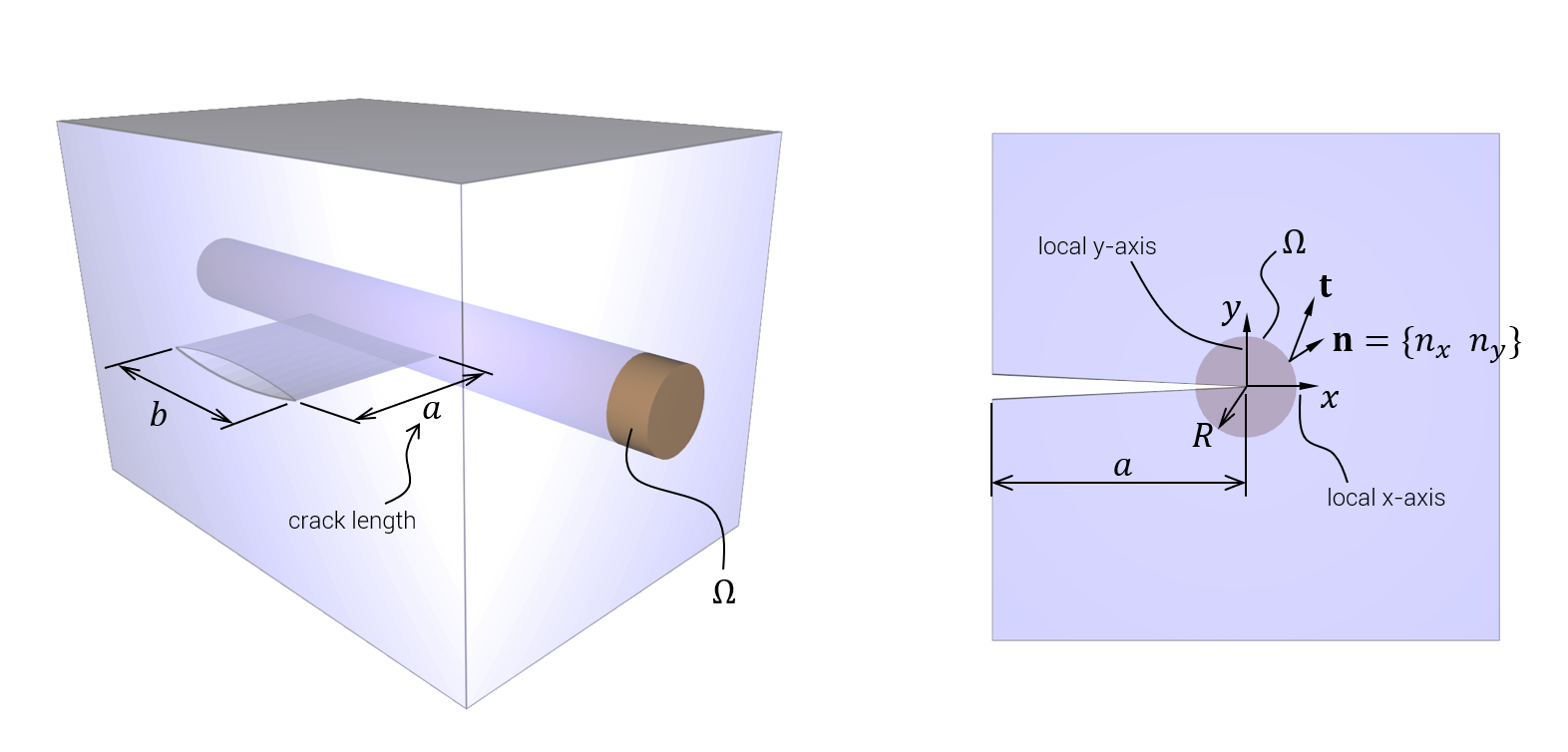OUTPUT_J_INTEGRAL
Output
"Optional title"
coid, entype, enid, csysid, $R$, $b$
Parameter definition
Description
This command is used to calculate J-integrals at crack tips. The local coordinate system should be positioned with its origin at the tip of the crack. The local x-axis defines the assumed crack propagation direction.
The crack width $b$ only needs to be specified if it does not extend through the complete thickness of the component (see figure below). $b$ is used in the relationship between virtual crack growth $\mathrm{d}a$ and virtual increase in crack area $\mathrm{d}A$:
$\displaystyle{\mathrm{d}A = b \cdot \mathrm{d}a}$
$J$ is defined as:
$\displaystyle{J = \frac{1}{b} \int_{\Omega} \left( w n_x - \mathbf{t} \cdot \frac{\mathrm{d}\mathbf{u}}{\mathrm{d}x} \right) \mathrm{d}\Omega}$
Here $w$ is the specific strain energy (energy per unit volume), $\mathbf{u}$ is the local displacement and $\mathbf{t}=\boldsymbol{\sigma}\mathbf{n}$ is the surface traction.
Time history data is written to the file J_integral.out. It contains the calculated J-value (energy per unit area of cracking) and the total area of the integral surface.

